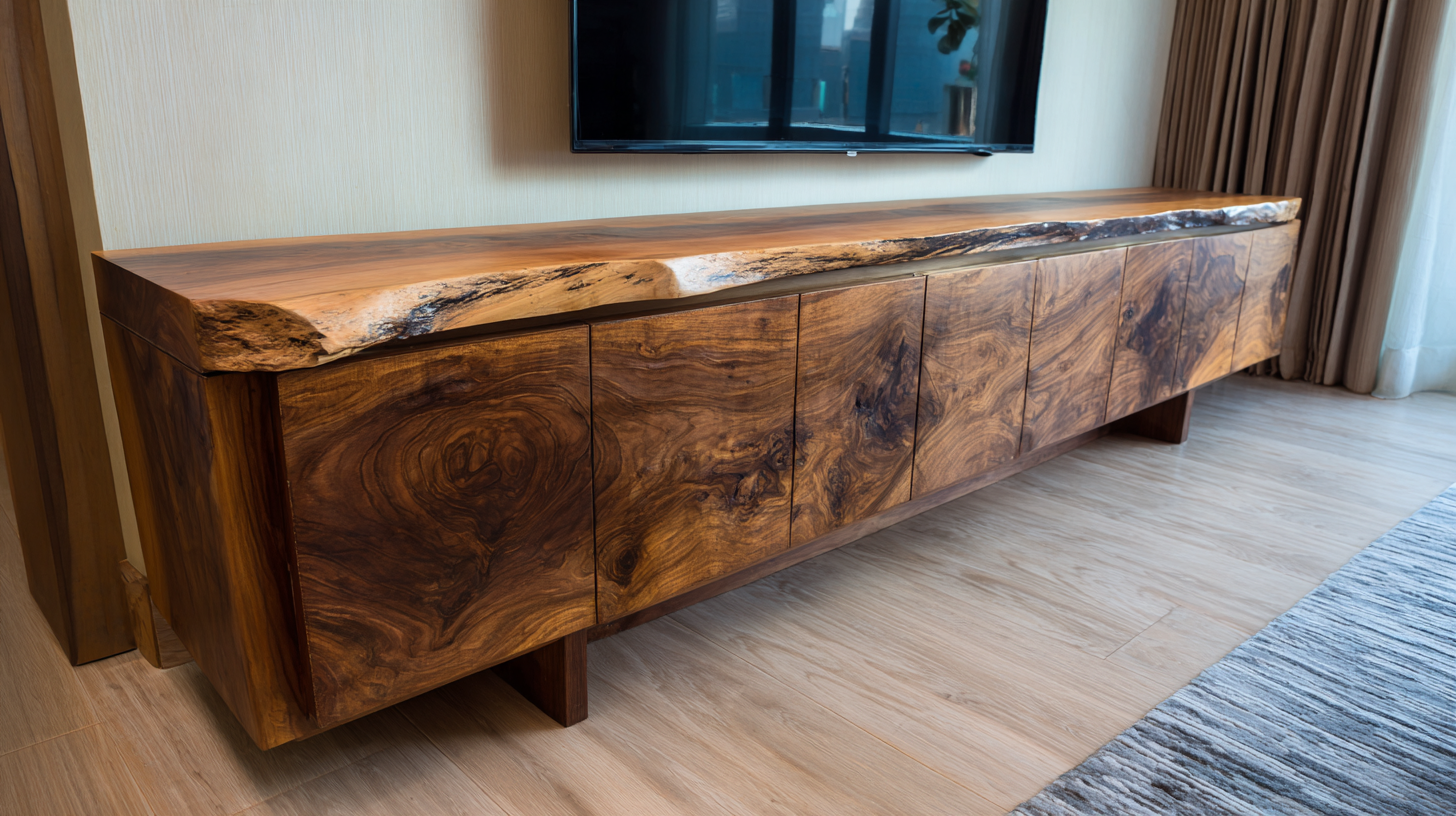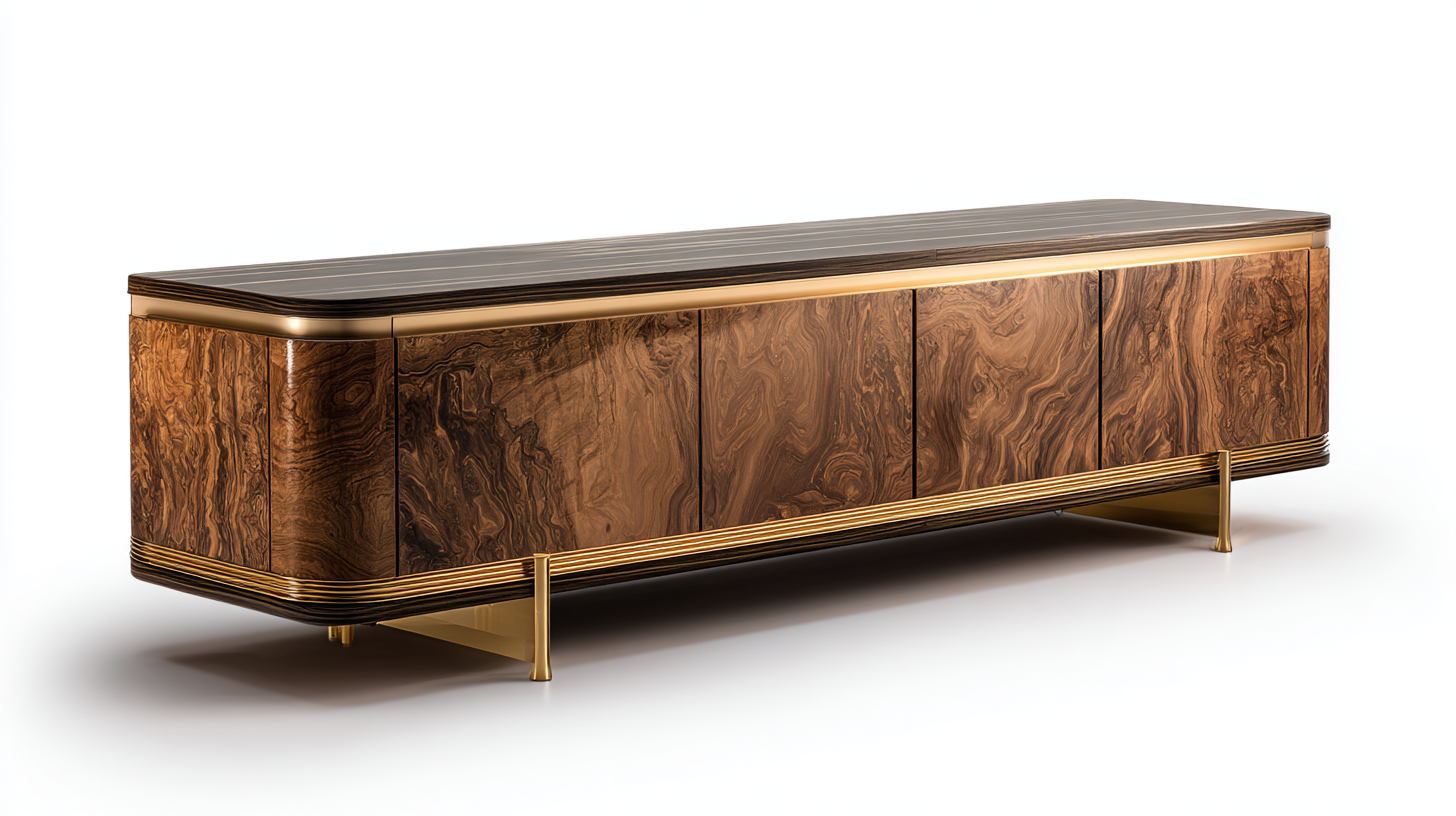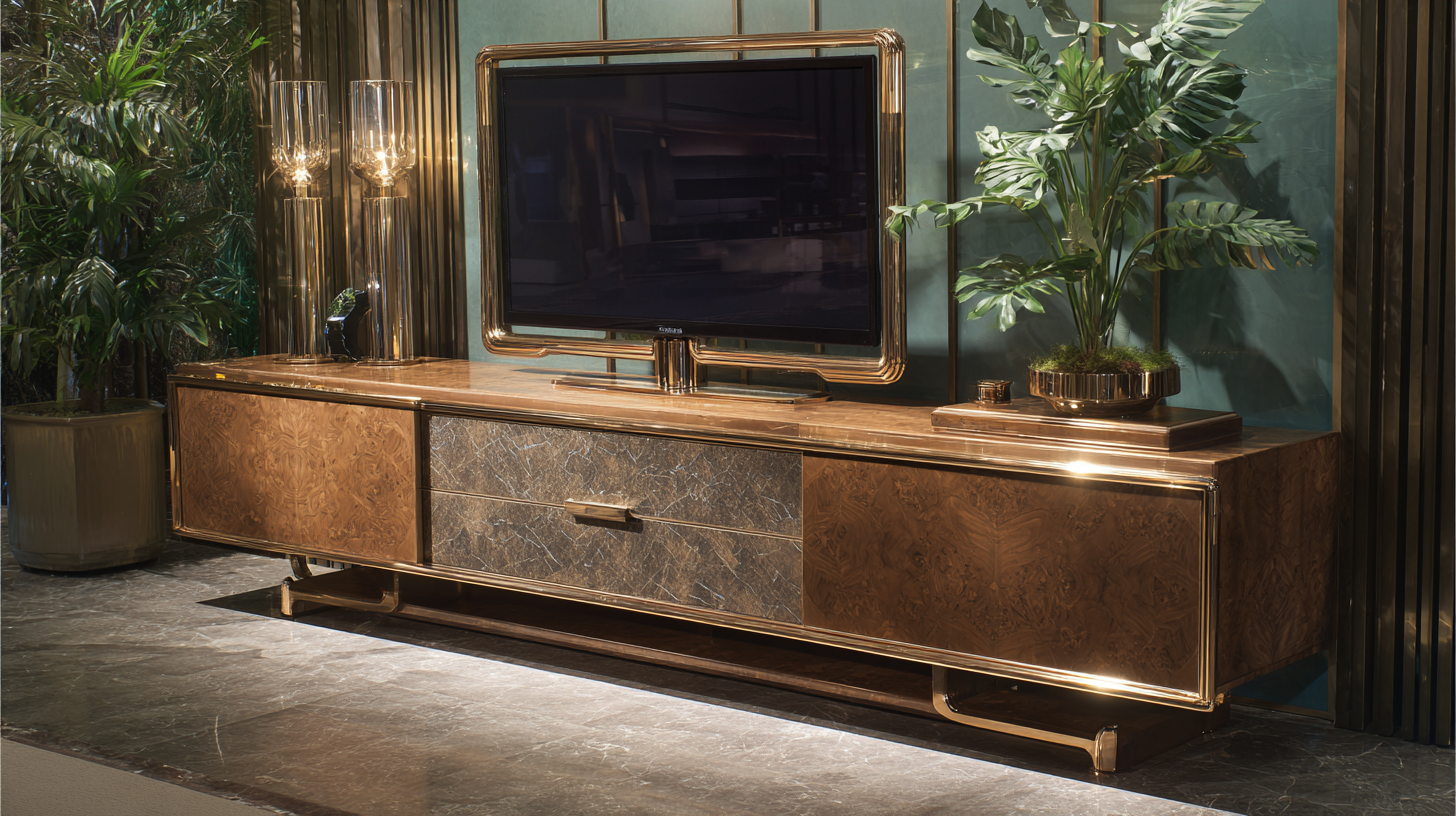In today's fast-paced and design-conscious world, a beautiful TV unit is more than just a piece of furniture; it is a statement of style and functionality that enhances the living space. Masterfully crafted TV units made in China are at the forefront of this evolution, offering not only aesthetic appeal but also practical solutions for modern homes around the globe. These exquisite pieces combine traditional craftsmanship with contemporary design, catering to the diverse tastes and needs of consumers worldwide. From sleek minimalist units to intricately detailed designs, the options are endless, showcasing the richness of Chinese artistry. As we explore the significance of these beautiful TV units, we'll uncover how they seamlessly blend into any décor while providing the perfect canvas for entertainment, storage, and personal expression.

When considering a reliable TV unit manufacturer in China, it’s essential to identify key qualities that set the best apart from the rest. As the market for televisions continues to grow globally, manufacturers are under increasing pressure to innovate and meet consumer demands for functionality and design. A dependable manufacturer should demonstrate not only a strong commitment to quality craftsmanship but also an understanding of international market trends and consumer preferences. This entails investing in advanced technology and training that enhances production capabilities while ensuring that the final products resonate with a global audience.
Furthermore, assessing a manufacturer’s reputation in customer satisfaction and after-sales service is crucial. The dynamics of the B-end market involve a network of partnerships where trust and reliability take center stage. Manufacturers that prioritize transparency in their operations and maintain open channels of communication are more likely to foster lasting relationships with vendors and clients. Their ability to respond swiftly to market changes and customer feedback can significantly influence their standing in the rapidly evolving television industry. By focusing on these essential qualities, businesses can align themselves with manufacturing partners who offer not only exceptional products but also a pathway to greater success in the competitive landscape of media and entertainment.
When it comes to selecting high-quality TV units, the materials used play a pivotal role in both durability and design aesthetics. One of the most popular materials is solid wood, cherished for its natural beauty and sturdiness. Solid wood TV units not only offer a timeless appeal but also bring warmth to any living space. They can be crafted in various finishes, allowing for customization that fits diverse interior styles. Additionally, solid wood ages gracefully, often becoming even more character-rich over time.

Another common material is engineered wood, often used for its cost-effectiveness and versatility. Manufactured from various wood fibers bonded together, engineered wood provides an excellent balance between functionality and modern design. This material is less prone to warping compared to solid wood, making it suitable for humid climates. Furthermore, the array of laminate options available allows designers to mimic the look of premium woods while retaining durability.
Lastly, metal accents are increasingly being incorporated into TV unit designs to enhance their contemporary appeal. Steel and aluminum elements not only add a modern twist but also promote strength and longevity. The combination of metal with wood or engineered materials creates a striking contrast that can elevate the overall aesthetic of a room while ensuring the furniture's resilience for years to come.
When it comes to purchasing TV units crafted in China, the enduring question revolves around the manufacturing standards and their implications for brand trustworthiness. High-quality materials and innovative design are crucial, but these alone do not guarantee reliability. A trustworthy brand must adhere to strict manufacturing processes, ensuring that every piece not only meets aesthetic demands but also complies with international safety regulations. Brands that implement comprehensive quality control systems and regularly undergo third-party audits often stand out as dependable choices in today’s saturated market.
Furthermore, the transparency of a brand's supply chain significantly contributes to its credibility. Consumers are increasingly seeking manufacturers who openly share information about their sourcing and production methods. Recognizing certifications and awards can guide purchasers towards reputable brands. By assessing these factors, such as commitment to sustainability and ethical labor practices, buyers can make informed decisions. Investing in a brand that prioritizes high manufacturing standards will ultimately lead to greater satisfaction and longevity in the purchase of a TV unit tailored for a global audience.
When evaluating potential manufacturers for masterfully crafted TV units made in China, it's crucial to ask the right questions to ensure quality and reliability. One of the first inquiries should be about their production capacity and lead times. According to a report by Statista, China holds a significant share of the global furniture market, boasting a production capacity that can meet the demands of international markets. A manufacturer’s ability to scale production efficiently can directly impact your supply chain and customer satisfaction.
Quality assurance is another key area of inquiry. Prospective partners should be able to provide details about their quality control processes and certifications. For instance, industry standards such as ISO 9001:2015 reflect a manufacturer’s commitment to high-quality production practices. A survey conducted by IBISWorld indicated that companies prioritizing quality control are more likely to achieve higher customer retention rates, which is invaluable in a competitive landscape.
Lastly, understanding the manufacturer’s approach to sustainable practices is increasingly important. A Nielsen report highlighted that 73% of global consumers are willing to change their consumption habits to reduce their environmental impact. Asking about the use of sustainable materials and waste management practices can not only enhance your brand image but also attract eco-conscious consumers in the global market.

The Chinese furniture industry has evolved significantly, prioritizing not just aesthetic appeal but also certifications and compliance with global standards. According to a report by the China National Furniture Association, over 70% of manufacturers have begun adopting international certifications such as ISO 9001 and FSC (Forest Stewardship Council). This shift reflects a growing commitment to quality management and sustainable sourcing, aligning with the increasing demands of international markets.
Moreover, recent analyses reveal that around 40% of Chinese furniture exports are now compliant with stringent environmental regulations. This trend is underscored by a surge in consumer preference for environmentally friendly products. The implementation of compliance measures not only enhances product credibility but also boosts competitiveness in a saturated global marketplace. With more brands aiming for certifications like Greenguard and the EU Ecolabel, Chinese manufacturers are poised to cater to a discerning global audience, ensuring that masterfully crafted TV units meet both style and safety standards.
| Attribute | Details |
|---|---|
| Material Used | Plywood, MDF, Solid Wood |
| Average Size | 150 cm x 40 cm x 50 cm |
| Production Capacity | 10,000 units per month |
| Certification Standards | ISO 9001, FSC, CARB |
| Export Markets | North America, Europe, Asia |
| Average Price Range | $300 - $800 |
| Eco-Friendly Options | Yes, using water-based finishes |
| Popular Design Styles | Modern, Rustic, Scandinavian |
